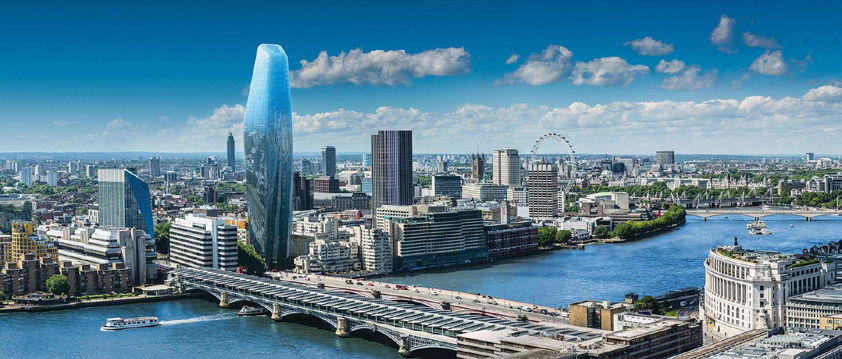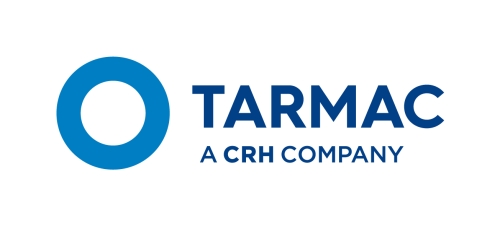sustainable construction
“Silverstone has always been a world-class circuit, but thanks to the efforts of Tarmac, the newly laid surface is truly world-beating. I don’t believe there is a smoother finish on any racetrack anywhere in the world and that is thanks to the ground-breaking technology Tarmac brought to the project.”
Stuart Pringle, Silverstone Circuits Ltd managing director
highlights
Rubber modified asphaltToptint Glow
UltiLowPhoenix cement
The carbon debate is often focused on capital or embodied carbon measurements that incorporate carbon emitted during materials production and construction. This overlooks the bigger picture. Crucially, embodied carbon measurements fail to consider performance over an assets life cycle, risking sub-optimal design and specification, as well as higher running or maintenance costs for the asset in the long-term.
To meet the government's construction sector target of 50% reduction in greenhouse gas emissions by 2025, we work with our Clients and Customers to adopt a whole-life approach to carbon.
Put simply, whole-life analysis measures anticipated carbon impacts over the lifetime of an asset. This includes extraction of raw materials, product miles and construction, through to maintenance, repair, reuse and recyclability following demolition. Both RIBA & RICS acknowledged the importance of whole-life specification, issuing guidance for members that became mandatory in 2018. We are working continuously to enable sustainable construction through new solutions, including technology and product development. Collaboration and early engagement is key to this.
Tarmac is fully committed to supporting the UK’s ambition of net-zero carbon emissions by 2050.
We have been making significant changes to our business and product portfolio for many years. Together with our industry, we know that we will need to continue on this upward trajectory and make further changes to contribute to a net zero society in 2050.
We do not intend to stand still. There is undoubtedly more we can do to lower the UK built environment’s emissions both as a business and as an industry. Operational changes and ongoing investment into product R&D will be important.
The road to a net zero society requires urgent action from Government and industry. No sector of the economy can do it alone, but it’s clear that we must all proactively step up to take action.
Local Authorities that have declared a ‘Climate Emergency’ have six months to develop their action plan stating what they are going to do to reduce climate impact. In response to this we wrote to about 200 Councilors’ who represent those authorities, to offer support and advice to help them produce their action plans. Tarmac offer a range of solutions that can support adaptation and mitigation of climate change. We also welcome the opportunity to work with local authorities to overcome some of the historical barriers to embedding sustainable innovation arising from lack of awareness of solutions and restrictive specifications and procurement rules.

Working with customers to support informed environmental choices about materials continues to be key. This requires behavioural change from our people as well as from our clients and supply chain partners. The changes could be specifying a material that will last longer and reduce carbon over the life cycle of a building or engaging with us earlier in the project so that we can look at low carbon ways to transport materials. Many of our lower carbon products also boast higher productivity and efficiency credentials, with faster curing and trafficking times reducing project schedules and public disruption.
Our cement and lime team were delighted to see Phoenix Cement come to life in the groundbreaking design of renowned Japanese architect Kengo Kuma’s Victoria and Albert Museum. The purpose built design museum in Scotland opened its doors last autumn and has already celebrated its 100,000th visitor to the extraordinary concrete structure which comprises no less than 2,429 precast elements. Tarmac delivered about 3,500 tonnes of Blue Circle Phoenix Cement, which is a factory manufactured Portland-Fly Ash Cement (CEM II/B-V 42,5N) providing lower embodied CO2 savings when compared to traditional CEM I cements.
Innovation in our paving solutions means whole life carbon and financial costs can be significantly reduced while road durability is improved.
Wiltshire and Tarmac Contracting collaboratively reviewed the A350 Westbury road reconstruction and it became evident that UltiLow warm temperature asphalt would provide very significant efficiency savings. UltiLow is proven to perform as well as conventional material while offering up to 12% CO2 savings along with safety benefits and faster cooling enhancing project efficiencies allowing roads to open to traffic sooner. The team completed ancillary works on other sections during the shift, reducing the project time by a third. The scheme was completed seven days earlier than programmed, providing a saving on the overall cost of £70k, principally from traffic management, whilst allowing for an additional 25% more work to be completed. The early completion reduced the diversion period and disruption for through traffic and the local community.
Major innovation used at Silverstone
In a major collaborative project this year we successfully resurfaced Silverstone’s world-famous racing circuit for the 2019 GoPro British Grand Prix MotoGP™ and British F1 Grand Prix. We used innovative technology to help optimise the construction process and ensure the surface was laid correctly first time.
3D smooth ride top con scanning technology was used on two of the new Wirtgen W 210 Fi planing machines. This helped improve circuit gradients and drainage – and eliminate surface bumps. An on-site laboratory allowed us to continually test the quality of our materials, even as the track was being laid. The use of BPO logistics software gave us a digital record of the material’s journey and meant we could slow down or speed up production as needed. In order to ensure we created a perfect finish, four 13-metre averaging beams were used with the two leading paving machines and three Wirtgen feeder machines ensured the smooth transition of material from our delivery wagons to the pavers, allowing non-stop paving and a joint-free, seamless track.
Rubber in Roads
Our latest solution is a new asphalt technology that uses rubber from recycled waste tyres, which makes use of approximately 750 waste tyres per kilometre of highway surfaced. With the UK producing 40 million tyres each year, it’s a technology with incredible potential for improving the environment. We first ran trials in 2011 with our Contracting team in North and Scotland supplying the product to their local authority in 2016, as they were keen to lead the way on sustainability.
Since then, further to additional development work, we have supplied three more local authorities with rubberised asphalt and have an exciting contract with Highways England. After securing £75,000 from Highway England’s designated innovation fund, we have installed new equipment at our Mountsorrel asphalt plant. This means that we will be able to supply large volumes of the product to resurface the M1. It will be the first time Highways England has used it on their network, so it marks a huge step forward for this innovation.
Rail Innovation Award
With more than 60 rail-connected sites nationwide, we have an unrivalled national rail freight network and an ongoing commitment to enhance our capabilities to support the rail freight industry in its net zero ambitions. We are able to move materials to where they are needed in a highly efficient way, resulting in fewer lorries on the roads, improved air quality and reduced carbon emissions – all contributing to a lower carbon built environment.
Tarmac was recognised in the ‘Innovation and Technical Development’ category at the Rail Freight Group (RFG) Awards, a prestigious rail industry award for the successful UK-first introduction of giant off-loading machinery at Battersea concrete depot, which is driving productivity and efficiency. The increased stocking area has also enabled Tarmac to make a significant reduction in the number of HGV movements in the capital as more material can be distributed via the rail network to serve the demands of local infrastructure projects.
Glowing Innovation
In 2019, we launched an innovative new concrete Toptint Glow with LuminTech technology. The decorative concrete surface that glows in the dark and dimly lit areas, helping to improve visibility and pedestrian safety. The technology consists of recycled composite luminescent chippings and works by absorbing natural and artificial UV radiation during the day and radiating it at night as a visible light. The new material is on sale to customers who may want to use it for projects where a distinctive visual impact is desired or where a material is needed for the demarcation of specific areas or zones.
Evolving Concrete
Tarmac worked with principal contractor J Reddington to save three months on the build programme for Landmark Pinnacle, a 75-storey residential tower under construction in Canary Wharf. The challenging programme called for a central slipformed core constructed using concrete with a high compressive strength of 85MPa for the first 22 storeys – something that had never previously been done in the UK. This example responds to real-world conditions with innovation, the value of which can only be fully unlocked by bringing the supply chain closer to the design and structural engineers creating specifications. Concrete and its capabilities are evolving to enable our clients and contractors deliver critical infrastructure and housing efficiently and cost-effectively.
